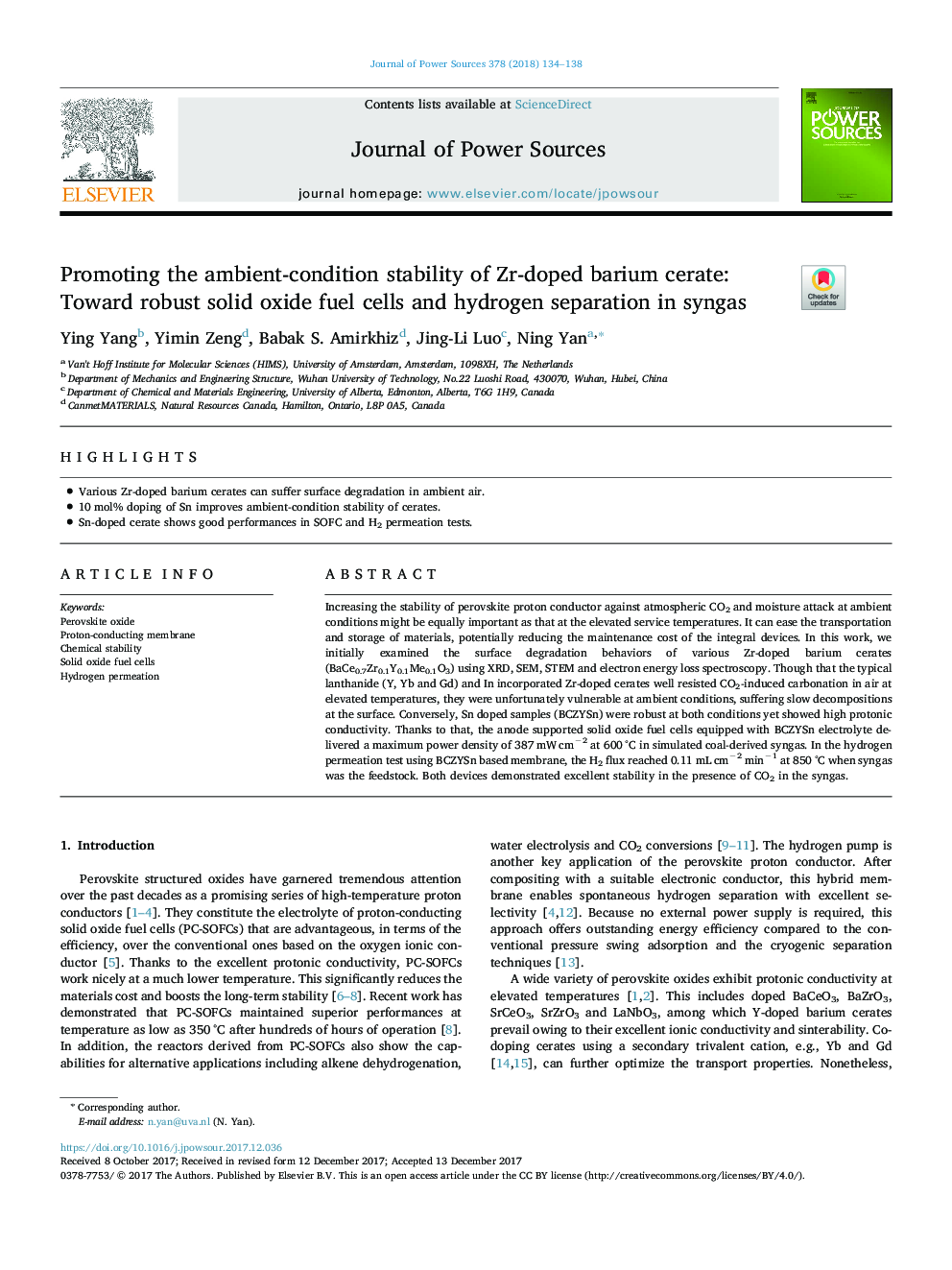| Article ID | Journal | Published Year | Pages | File Type |
|---|---|---|---|---|
| 7726048 | Journal of Power Sources | 2018 | 5 Pages |
Abstract
Increasing the stability of perovskite proton conductor against atmospheric CO2 and moisture attack at ambient conditions might be equally important as that at the elevated service temperatures. It can ease the transportation and storage of materials, potentially reducing the maintenance cost of the integral devices. In this work, we initially examined the surface degradation behaviors of various Zr-doped barium cerates (BaCe0.7Zr0.1Y0.1Me0.1O3) using XRD, SEM, STEM and electron energy loss spectroscopy. Though that the typical lanthanide (Y, Yb and Gd) and In incorporated Zr-doped cerates well resisted CO2-induced carbonation in air at elevated temperatures, they were unfortunately vulnerable at ambient conditions, suffering slow decompositions at the surface. Conversely, Sn doped samples (BCZYSn) were robust at both conditions yet showed high protonic conductivity. Thanks to that, the anode supported solid oxide fuel cells equipped with BCZYSn electrolyte delivered a maximum power density of 387â¯mWâ¯cmâ2 at 600â¯Â°C in simulated coal-derived syngas. In the hydrogen permeation test using BCZYSn based membrane, the H2 flux reached 0.11â¯mLâ¯cmâ2â¯minâ1 at 850â¯Â°C when syngas was the feedstock. Both devices demonstrated excellent stability in the presence of CO2 in the syngas.
Keywords
Related Topics
Physical Sciences and Engineering
Chemistry
Electrochemistry
Authors
Ying Yang, Yimin Zeng, Babak S. Amirkhiz, Jing-Li Luo, Ning Yan,
